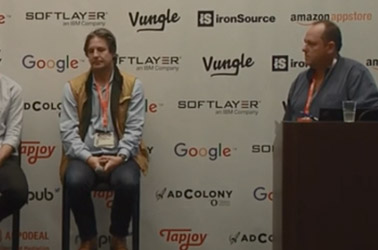
Disclaimer: This IE-NSIGHT is provided for general informational purposes only and is not offered, nor should be construed, as legal advice.
Late last year on December 27, the Consolidated Appropriations Act, 2021 (Public Law No: 116-260), was signed into law in the United States.[i] In addition to authorizing government spending and economic stimulus in response to the COVID-19 pandemic, the law also contains three intellectual property updates: (1) the Protecting Lawful Streaming Act,[ii] (2) the Copyright Alternative in Small-Claims Enforcement Act of 2020,[iii] and (3) the Trademark Modernization Act of 2020.[iv]
These new laws elevate the criminal petalites for large-scale illegal online streaming of copyrighted material, establish a tribunal to adjudicate certain small copyright claims, make it easier for brand owners to obtain injunctive relief for trademark violations, and establish new procedures to challenge trademarks applications and registrations. Companies operating in the games sector should be aware of these legislative updates and how they could affect the prosecution, use, and maintenance of their trademarks, as well as their use of copyrighted material.
In this IE-NSIGHT, we provide a brief overview of the IP-related provisions of the recently enacted Consolidated Appropriations Act, 2021.
Protecting Lawful Streaming Act
The Protecting Lawful Streaming Act (PLSA) establishes felony criminal penalties for the willful engagement in large-scale online streaming of unauthorized content for commercial purposes. In doing so, the PLSA closes the so-called “streaming loophole” by harmonizing the criminal penalties for illegal streaming with those existing for the illegal downloading of copyrighted works.
Previously, the criminal penalties for copyright infringement distinguished between how a work was made available online. While streaming and downloading are exclusive rights of a copyright owner, the violation of those rights was unequal and penalized differently. Specifically, a violation of the public performance right (associated with streaming) could only be charged as a misdemeanor (which carries significantly less criminal penalties if convicted), whereas unauthorized downloading, a violation of the exclusive rights to reproduce and distribute, could be punished as a felony.
The U.S. Department of Justice has often cited the lack of felony penalties as an impediment to combatting the growth of illegal streaming[v] and the Copyright Office has also called for the criminal penalties for online infringement to be harmonized.[vi] Meanwhile, misdemeanor penalties have not sufficiently deterred large-scale infringers, as streaming has grown to be the most common form of online copyrighted infringement.[vii]
The PLSA amends Title 18 of the United States Code to add Section 2319C, titled “Illicit digital transmission services” setting out the prohibited acts that are now subject to felony penalties. The statute requires that a person must act: (1) willfully, (2) for purposes of commercial advantage or private financial gain, and (3) offer or provide to the public a digital transmission service. A digital transmission service is defined in the statute as “a service that has the primary purpose of publicly performing works by digital transmission.” If all three of these initial requirements are met, a person must then satisfy one of the following three factors by providing a digital transmission service that:
(1) is primarily designed or provided for the purpose of publicly performing copyright-protected works by digital transmission without the authority of the copyright owner or the law;
(2) has no commercially significant purpose or use other than to publicly perform copyright-protected works by means of digital transmission without the authority of the copyright owner or the law; or
(3) is intentionally marketed by or at the direction of that person to promote its use in publicly performing copyright-protected works by means of digital transmission without the authority of the copyright owner or the law.
A violation of Section 2319C may result in a fine and/or imprisonment of up to three years for a first offense and 10 years for a second or subsequent offense. The statute also provides enhanced penalties for the infringement of “works being prepared for commercial public performance,” which corresponds to pre-release and newly released content.
The PLSA was carefully drafted to exclude individual consumers from its scope and the provisions of the PLSA are effective immediately, providing the Department of Justice with the authority to bring felony charges against the providers of such illegal services. These felony criminal penalties are in addition to those civil remedies available to a copyright owner, thus not affecting a copyright owner’s ability to pursue civil action for infringement.
Copyright Alternative in Small-Claims Enforcement Act of 2020
The Copyright Alternative in Small-Claims Enforcement of 2020 (CASE Act) establishes a new alternative dispute resolution forum within the Copyright Office, where parties may voluntary adjudicate certain copyright disputes before a “Copyright Claims Board”, involving small-claims of up to $15,000 per work infringed, with statutory damages capped at a total of $30,000. This legislation was recommended by the Copyright Office following its two-year study on remedies for small copyright claims.[viii]
The CASE Act calls for the Copyright Claims Board to be comprised of at least three Copyright Claims Officers and two Copyright Claims Attorneys appointed by the Librarian of Congress. Under the streamlined adjudication process, the Copyright Claims Officers will have authority similar to those of a federal judge, with the specific purpose of facilitating the settlement or resolution of the dispute. Decisions rendered by the Copyright Claims Board are final and there is limited review available.
In the U.S., federal district courts have exclusive jurisdiction over matters of copyright,[ix] and the cost and complex nature of bringing a federal lawsuit makes it difficult to sue for infringement. In that regard, the CASE Act is primarily geared toward individuals and small businesses to provide simpler and less expensive alternative forum to enforce their rights. In the same manner, the CASE Act also provides users of copyrighted works with a cost-effective way to respond when their use is challenged.
Claims, by both copyright owners and users, for infringement, declaratory relief (including declarations of non-infringement), and misrepresentation in connection with Section 512(f) of the Digital Millennium Copyright Act (DMCA), along with defenses (e.g., fair use) and counterclaims may all be brought before the Copyright Claims Board.
To keep costs low for participants, the CASE Act proceedings will occur through written submissions and teleconferences. The CASE Act does not contemplate live trials, but does permit limited discovery and for hearings that could include oral presentations and witness testimony. While the filing fees will be determined by implementing regulations for the CASE Act, the law requires that the fee be at least $100, but no more than the cost of filing a claim in federal district court.
Opponents of the CASE Actcontend that it will encourage nuisance claims and have a “chilling effect” on free speech, while supporters maintain that participation in the streamlined process is entirely voluntary and responding parties may choose to “opt out”, albeit with the prospect of defending their case in federal court, where they will face the prospect of significantly higher damages. The CASE Act also discourages bad faith claimants by enabling the tribunal to dismiss frivolous claims, award attorneys’ fees, and bar those who repeatedly abuse the system.
The CASE Act requires the Copyright Claims Board to begin operating within one year of the date the legislation was enacted, which is December 27, 2021. Although, the law also provides for a six-month extension for significant reasons, including those associated with the COVID-19 pandemic.
Trademark Modernization Act of 2020
The TMA codifies the presumption of irreparable harm for requests for injunctive relief in trademark cases. A trademark owner may seek injunctive relief early on in a trademark case, for example asking a Court to stop sales of an allegedly infringing game. To obtain that relief, it must prove that it is likely to win the case at trial and that it will suffer irreparable harm if the Court fails to act. A 2006 a U.S. Supreme Court decision made it increasingly difficult for trademark plaintiffs to obtain injunctive relief and led to a split among circuit courts regarding the standard for determining whether the trademark owner will suffer irreparable harm if the Court refuses to grant a preliminary injunction.[x] The TMA now makes clear that the trademark owner is entitled to a rebuttable presumption of irreparable harm. This rule will help trademark owners enforce their rights by making it easier for them to obtain injunctive relief.
Also codified in the TMA is the long-standing United States Patent and Trademark Office (USPTO) procedure that allows third parties to submit evidence (known as a Letter of Protest[xi]) for consideration during the examination of a trademark application on why the registration should be refused. Pursuant to recently promulgated rules, these third-party submissions must identify each legal ground to refuse the registration, include evidence that supports those grounds, along with a concise description of the supporting evidence, and the payment of a fee.[xii] While the USPTO’s decision on whether to include such evidence is final and non-reviewable, the exclusion of any evidence from the record will not impact any party’s ability to raise objections following the mark’s publication for opposition. This change formalizes the ability of third parties to challenge a trademark application early on in the process, rather than waiting until the application has been published for opposition.
The TMA introduces two new ex parte proceedings, whereby third parties may petition the USPTO to expunge (remove) or reexamine a trademark registration for nonuse:
There is no third-party standing requirement to file either of these petitions, however, both must include supporting evidence and a verified statement regarding the petitioner’s “reasonable investigation.” Upon receipt, and the USPTO Director’s determination that the petition sets forth a prima facie case, the Office will initiate the proceeding and the trademark owner may respond with its own evidence. Under the statute, the USPTO Director may also institute either of these proceedings on its own initiative, without a third-party petition. Adverse decisions on either an expungement or reexamination proceeding may be appealed to the U.S. Trademark Trial and Appeal Board and then to Federal Court. These proceedings are intended to limit the common practice of applicants including a large list of goods or services that they do not actually provide and to allow third parties to narrow registrations that they believe include such goods or services.
Finally, the TMA provides the USPTO with flexibility to reduce the standard six-month response deadline to Office Actions, and in doing so, authorizes examining attorneys to set response times between 60 days and six months. For the payment of a fee, applicants will be able to request extensions up to a full six-month period.
The TMA provisions with respect to the third-party challenges to applications and registrations are scheduled to become effective on December 27, 2021, whereas the remaining provisions of the new law are effective as of its enactment, subject to implementing regulations.
[i] Consolidated Appropriations Act, 2021, H.R. 133, 116th Cong. (2020). The full of the Consolidated Appropriations Act, 2021 can be viewed at https://www.congress.gov/116/bills/hr133/BILLS-116hr133enr.pdf
[ii] Id. at 994-995. The full of the Protecting Lawful Streaming Act can be viewed at: https://www.tillis.senate.gov/services/files/A30B0C08-FB97-4F90-BB60-43283EB7AF35
[iii] Id. at 995-1019. The full text of the Copyright Alternative in Small-Claims Enforcement Act of 2020 can be viewed at: https://www.congress.gov/bill/116th-congress/house-bill/2426/text
[iv] Id. at 1019-1029. The full text of the Trademark Modernization Act of 2020 can be viewed at: https://www.congress.gov/bill/116th-congress/house-bill/6196/text?r=1
[v] https://thehill.com/policy/technology/213285-doj-to-congress-make-online-streaming-a-felony
[vi] https://www.copyright.gov/laws/hearings/letter-to-senators-tillis-and-coons-on-felony-streaming.pdf
[vii] https://www.tillis.senate.gov/2020/12/tillis-releases-text-of-bipartisan-legislation-to-fight-illegal-streaming-by-criminal-organizations
[viii] https://www.copyright.gov/docs/smallclaims/usco-smallcopyrightclaims.pdf
[ix] 28 USC 1338
[x] eBay v. MercExchange, 547 U.S. 388 (2006)
[xi] https://www.uspto.gov/trademarks/trademark-updates-and-announcements/letter-protest-practice-tip
[xii] 37 C.F.R. §§ 2.6(a)(25), 2.149




0 Comments